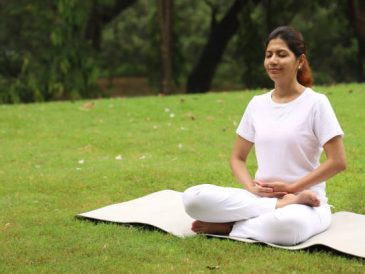In an increasingly fast-paced world where stress and anxiety are prevalent, the pursuit of happiness has become a universal goal. While various strategies exist to enhance well-being, one ancient practice stands out for its profound impact on happiness: yoga. Beyond its physical benefits, yoga has long been celebrated for its ability to cultivate a sense of peace and contentment. Now, science is delving into the mechanisms behind how yoga promotes happiness, offering insights into its transformative power.
Understanding Happiness: Before exploring how yoga influences happiness, it’s essential to grasp the concept of happiness itself. Happiness is not merely the absence of negative emotions but encompasses a state of overall well-being characterized by positive emotions, life satisfaction, and a sense of meaning and purpose. It involves a complex interplay of biological, psychological, and social factors.
The Yoga Experience: Yoga is a holistic practice originating from ancient Indian traditions that integrates physical postures (asanas), breath control (pranayama), meditation, and philosophical principles. Beyond its physical aspects, yoga aims to harmonize the mind, body, and spirit, fostering a deeper connection with oneself and the world.
Scientific Investigations: Recent scientific research has shed light on the mechanisms through which yoga influences happiness. One prominent theory suggests that yoga modulates the stress response system, reducing levels of cortisol, the primary stress hormone. By promoting relaxation and activating the parasympathetic nervous system, yoga counteracts the detrimental effects of chronic stress on mental health.
Furthermore, studies utilizing brain imaging techniques such as functional magnetic resonance imaging (fMRI) have revealed that regular yoga practice can lead to structural and functional changes in the brain. These changes include increased gray matter volume in regions associated with emotional regulation, such as the prefrontal cortex and hippocampus, and decreased activity in the amygdala, which plays a central role in processing negative emotions like fear and anxiety.
Yoga and Neurotransmitters: Yoga also influences neurotransmitter levels, the chemical messengers in the brain that regulate mood and emotions. Research suggests that yoga practices, particularly meditation and deep breathing, enhance the production of gamma-aminobutyric acid (GABA), a neurotransmitter that promotes feelings of relaxation and reduces anxiety. Additionally, yoga has been linked to increased levels of serotonin, often referred to as the “happiness neurotransmitter,” which contributes to feelings of well-being and contentment.
The Mind-Body Connection: One of the most profound aspects of yoga is its emphasis on the mind-body connection. Through mindful movement and breath awareness, yoga cultivates present-moment awareness, allowing individuals to observe their thoughts and sensations without judgment. This mindfulness practice is associated with greater emotional resilience, decreased rumination, and increased positive affect.
Moreover, yoga encourages self-compassion and acceptance, fostering a non-judgmental attitude toward oneself and others. By embracing imperfection and honoring the body’s limitations, yoga promotes a sense of gratitude and contentment with the present moment rather than striving for unattainable ideals.
Social Connection and Community: Beyond its benefits, yoga often involves practicing in a supportive community setting, which enhances social connection and belongingness. Research indicates that social support is a significant predictor of happiness, buffering against stress and promoting overall well-being. Participating in group yoga classes provides opportunities for interpersonal connection, fostering a sense of camaraderie and shared purpose.
The Role of Breath: Central to yoga practice is the conscious control of breath, known as pranayama. Breathing exercises in yoga, such as deep belly breathing and alternate nostril breathing, have been shown to induce a state of relaxation and activate the body’s relaxation response. By regulating breathing patterns, individuals can modulate their physiological and emotional states, promoting a sense of calm and equilibrium.
Yoga and Positive Psychology: The field of positive psychology, which focuses on understanding and enhancing human flourishing, aligns closely with the principles of yoga. Both emphasize strengths, virtues, and practices that contribute to a fulfilling life. Positive psychology interventions, such as gratitude journaling and acts of kindness, complement yoga practice by reinforcing positive emotions and fostering resilience in the face of adversity.
Practical Applications: Incorporating yoga into daily life can yield profound benefits for happiness and well-being. Whether through attending regular classes, practicing at home, or integrating yoga techniques into existing routines, individuals can harness the transformative power of yoga to cultivate happiness. Moreover, combining yoga with other wellness practices, such as meditation, mindfulness, and healthy lifestyle habits, can amplify its effects and promote holistic flourishing.
As scientific research continues to uncover the mechanisms behind yoga’s impact on happiness, the ancient practice remains a potent tool for enhancing well-being in modern society. By modulating stress responses, promoting mindfulness, nurturing social connections, and fostering self-compassion, yoga offers a holistic approach to happiness that transcends the limitations of conventional interventions. As individuals embark on their yoga journey, they tap into a reservoir of inner peace and joy, experiencing the profound transformation that comes from aligning mind, body, and spirit.




